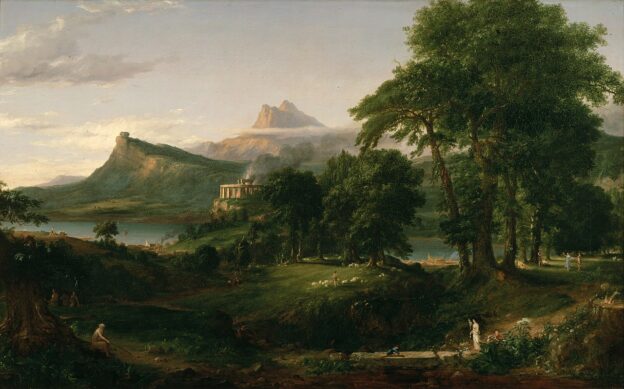In the second volume of his monumental work, “The Decline and Fall of the Roman Empire”, Edward Gibbon plunges into the complexities of the Antonine age, an epoch marked by both philosophical enlightenment and geopolitical challenges. This essay seeks to unravel Gibbon’s meticulous treatment of this era, examining his insights into the philosophical currents, the dynamic frontiers, and the inexorable rise of Christianity to state primacy.
The Philosophical Flourishing of the Antonine Era
The Antonine age, spanning the reigns of Antoninus Pius and Marcus Aurelius, witnessed a renaissance of Stoic, Epicurean, and Platonic thought. Gibbon, with his characteristic erudition, charts the confluence of these philosophical currents. He depicts a Rome that, while still grounded in its traditional religio-political ethos, was engaging in deep introspection. Marcus Aurelius, the philosopher-emperor, embodies this synthesis of imperial duty and Stoic virtue.
Yet, Gibbon is astute in highlighting the paradox: an empire at its philosophical zenith was also one on the cusp of significant change, beset by challenges both internal and external.
The Dynamic Roman Frontiers
Gibbon’s examination of the Roman frontiers is a masterclass in geopolitical analysis. The empire, vast and diverse, had always faced threats at its borders. Yet, under the Antonines, these threats morphed into sustained challenges. Gibbon presents the frontiers not merely as physical boundaries but as fluid zones of cultural, economic, and military interactions.
His narrative vividly brings to life the myriad ‘barbarian’ tribes – the Germanic groups to the north, the Parthians to the east, and the tribes of Africa to the south. While Gibbon’s terminology might seem Eurocentric to modern scholars, his understanding of the pivotal role these tribes would play in the empire’s decline is prescient. He underscores the empire’s dual strategy of diplomacy and militarism, recognizing that Rome’s might alone couldn’t ensure its endurance.
Christianity’s Challenges and Triumph
The growth of Christianity in Volume II forms the crux of Gibbon’s analysis. He details the theological ferment of the era, from the Arian controversy to the theological debates at Nicaea. Through Gibbon’s lens, early Christianity appears not monolithic but dynamic, fraught with disputes yet resilient in its growth.
Gibbon’s portrayal of Constantine’s conversion and the subsequent Christianization of the empire is nuanced. He recognizes the pragmatic aspects of Constantine’s decision, while also emphasizing the profound sociopolitical shifts it engendered. Christianity’s journey, from persecuted sect to state religion, encapsulates the transformative power of faith in the political landscape of Rome.
Conclusion
Gibbon’s Volume II, with its interplay of philosophy, geopolitics, and religion, offers a microcosm of the Roman Empire’s complexities. It elucidates an empire grappling with its identity amidst changing times. Through philosophical introspections, frontier challenges, and religious metamorphoses, Gibbon presents a narrative that is both a history of an empire and a meditation on the nature of power, belief, and change. As with the best of historiography, Gibbon challenges scholars to reflect on the broader questions of human civilization, making Volume II an enduring testament to the art of historical writing.
